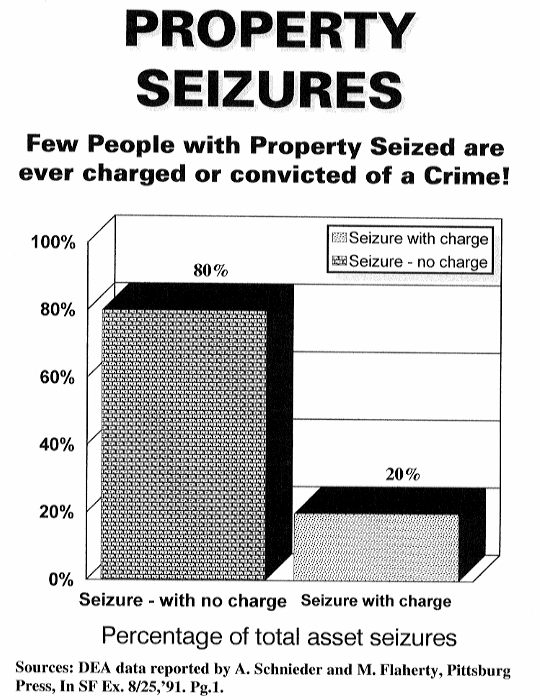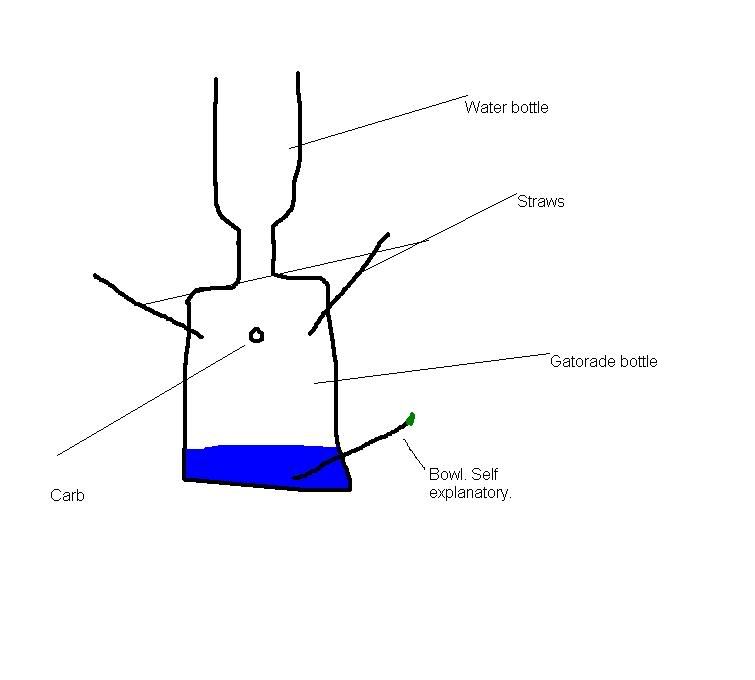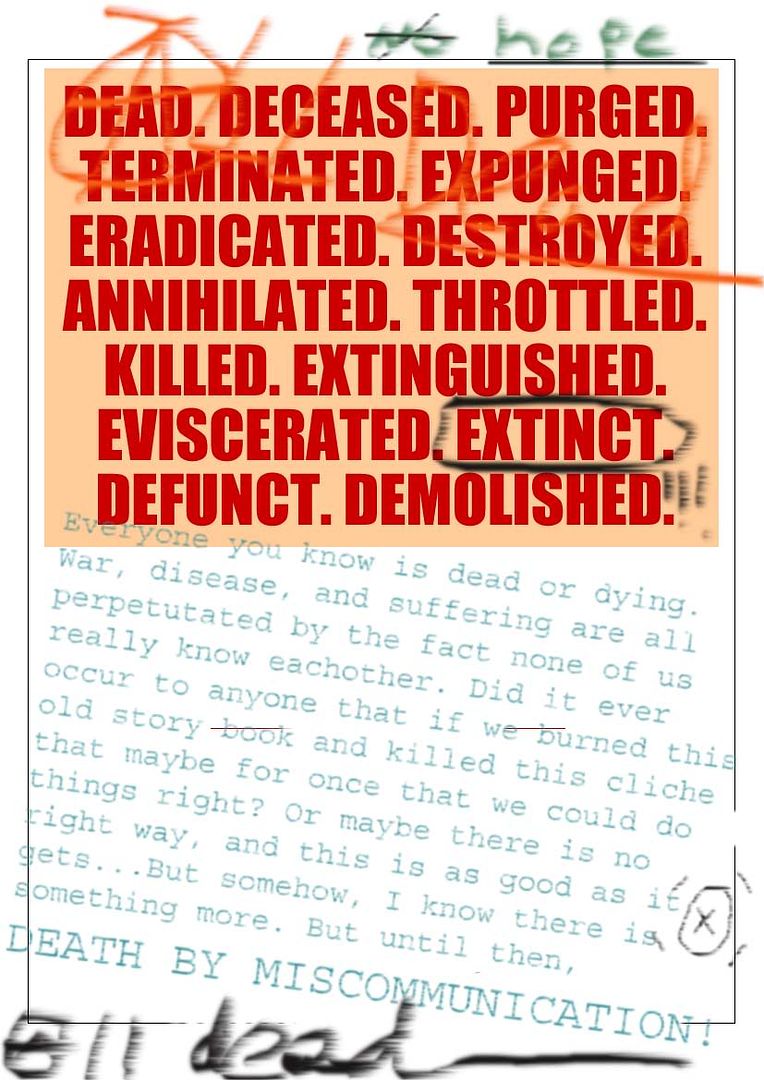The Drug War and its Roots in American History
For thousands of years, psychoactive drugs have been used and abused by many cultures all over the world, and only until recently have they been outlawed and demonized by a racist and hypocritical drug war. The beginnings of the American War on Drugs is inseparable with racism such as opium dens being outlawed because of fear of Chinese immigrants seducing white women while Victorian women commonly using laudanum, a tincture of opium. The government relies on a maelstrom of misinformation, lies, and propaganda that is fed through a willing media, and aimed at kids with programs like DARE or Freevibe. For as long as there has been a War on Drugs, there has also been a movement to reform these drugs laws, or at least to practice harm reduction, with such organizations like NORML or Erowid. The War on Drugs has been waged for decades, and is a war on only some drugs, which was not determined by scientific studies and public debate, but by ignorance, politics, and a mainstream hatred for the counter cultures that surround them.
Although psychoactive drug abuse has boomed in the past 100 years, for thousands of years many different cultures used drugs spiritually or medicinally. “Archeologists believe that hallucinogens were also used in a number of ancient societies to help leaders make important decisions relating to issues such as war, hunting, migrating to new home and selecting tribal and spiritual leaders.”(Barter 24) Also, ethnogens were used by ancient religions to help deal with the uncertainties of life. “For thousands of years, people in many cultures have used hallucinogens in an attempt to gain spiritual insights to help them deal with the uncertainties of that are apart of their daily lives.”(Barter 24)
“The first likely use of cannabis was for its fibers although it may also have been grown for its seed.”(Booth 16) The prevalence of cannabis and its medical uses in the Middle East suggest that cannabis may even have been used in Biblical times. “In Biblical times, according to Genesis, Noah ‘Drank of the wine, and was drunken.’”(Gottfried 5) With the likely hood that Noah drank alcohol to become intoxicated may suggest that cannabis may have been used recreationally. “Many urban myths, false stories that are repeated as if they are true have focused on hallucinogens, especially LSD.”(Barter 87) Although there are many urban myths that suggest that hallucinogens are physically damaging, the thousands of years of history and use in ancient cultures show that hallucinogens have been used spiritually with little side effect. Although drugs were used for their psychoactive properties most often they were used for medicine. “The most commonly reported ritual use of psychoactive drugs among indigenous peoples of the Western Hemisphere is healing the sick.”(Barter 28) There is definite proof that hallucinogenic drugs have been used in religion. “The use of peyote as part of religious rituals is legal for members of the Native American Church.”(Barter 85)
There is another drug that is also historically important: Opium, especially in the Far East. “By the second century A.D. Chinese medicine was the most advanced in the world and it was then that a famous physician, Hua Tuo, is said to have discovered that cannabis resin mixed with wine was an effective analgesic.”(Booth 19) Both opium and cannabis have been used historically analgesic reasons, although opium was the most powerful with it containing drugs like morphine and codeine. “The oldest existing historical records and subsequent archeological evidence thought not extensive seem to support the theory, that cannabis was being grown at the dawn of Chinese civilization.”(Booth 17) Cannabis was most widely used for its many other uses such as: housing, food, nutrition, for its fiber and for its fuel, and in the seventeenth century Americans were paid to grow large quantities of hemp.
“Known as the ‘father of the drug war’ Henry Anslinger was the first U.S. commissioner of Narcotics.”( Isralowitz 177) Henry Anslinger contributed much racism to the beginning of the drug war and a racist sentiment was present in anti drug propaganda. “Give one of these Mexicans beat field workers a couple of puffs on a marijuana cigarette and he thinks he’s in the bull ring at Barsalona.”(Booth 135) Cannabis was particularly demonized and many outrageous claims were made against it, which resulted in reactionary pro-drug sentiment which regarded cannabis as completely harmless. “Either cannabis is regarded as an innocuous social drug or a serious danger to society.”(Booth 332) Although today exceedingly outrageous claims aren’t made against marijuana, government policy is that marijuana is a ‘gateway’ drug that leads to harder and addicting drugs. “Opponents of drug legalization argue that seemingly harmless drugs like marijuana can act as a gateway drug that leads to the use of more dangerous drugs.”(Gottfried 14) With plenty of medical evidence to suggest that marijuana is fairly innocuous, it is a rather common belief that cannabis is outlawed for mostly moral beliefs. “The war on cannabis is being fought from a concern not for public health or order (as might be said of the war on heroin or crack) but for public morality.”(Booth 332) “During his presidency [Nixon], the national commission on marijuana and drug abuse, after conducting an exhausted study on marijuana, concluded in 1972 that it was virtually harmless, and that people should not go to jail for smoking it.”(Gottfried 187)
 The war on drugs and cannabis specifically has been used for unethical political motivations. “We knew we were lieing about the health effects of marijuana. We knew we were lieing about the relationship of heroin and crime. But this is what we were doing to win the election. And it worked.[-Nixon]”(Gottfried 186) The war on drugs have been used by both major political parties, “strong bi-partisan Congressional support,”(www.mediacampaign.org) has stopped any realistic goals of drug law reform. The American government uses scare tactics to fear the public into
The war on drugs and cannabis specifically has been used for unethical political motivations. “We knew we were lieing about the health effects of marijuana. We knew we were lieing about the relationship of heroin and crime. But this is what we were doing to win the election. And it worked.[-Nixon]”(Gottfried 186) The war on drugs have been used by both major political parties, “strong bi-partisan Congressional support,”(www.mediacampaign.org) has stopped any realistic goals of drug law reform. The American government uses scare tactics to fear the public into a frenzy over drug abuse. ”United States President George W. Bush said, ‘If you quit drugs, you join the fight against terrorism’ .”(www.errowid.org) “Enforce the law, you’ve got to scare them. [Nixon]’(Gottfried 188) The American government tried testing psychoactive drugs for a military edge. “During the 1950’s the CIA believed that LSD might be an effective truth serum.”(Barter 46) The supposed reason for drug legislation is to keep the country safe from criminals. “We are aggressively pushing back against the drug and are working to make America a better place.”(www.mediacampaign.org) However, many people reject the notion that legislating drugs has any positive effect. “5 decades of illicit hallucinogens used by millions of Americans, coupled with legitimate scientific research, have prompted many people to challenge government claims that hallucinogens represent a serious health risk to individuals and to the nation in general.” (Barter, 76) In fact, by criminalizing drug use/abuse, crime hasn’t gone down, by rather it has increased. This is a result of there being a large demand for illegal drugs, which raises huge profits for drug traffickers, all of which is tax free, “Exactly as the Prohibition of alcohol in the 1920’s in the United States helped launch a network of crime.” (www.erowid.org)
a frenzy over drug abuse. ”United States President George W. Bush said, ‘If you quit drugs, you join the fight against terrorism’ .”(www.errowid.org) “Enforce the law, you’ve got to scare them. [Nixon]’(Gottfried 188) The American government tried testing psychoactive drugs for a military edge. “During the 1950’s the CIA believed that LSD might be an effective truth serum.”(Barter 46) The supposed reason for drug legislation is to keep the country safe from criminals. “We are aggressively pushing back against the drug and are working to make America a better place.”(www.mediacampaign.org) However, many people reject the notion that legislating drugs has any positive effect. “5 decades of illicit hallucinogens used by millions of Americans, coupled with legitimate scientific research, have prompted many people to challenge government claims that hallucinogens represent a serious health risk to individuals and to the nation in general.” (Barter, 76) In fact, by criminalizing drug use/abuse, crime hasn’t gone down, by rather it has increased. This is a result of there being a large demand for illegal drugs, which raises huge profits for drug traffickers, all of which is tax free, “Exactly as the Prohibition of alcohol in the 1920’s in the United States helped launch a network of crime.” (www.erowid.org)
Anti-drug prohibition really started in the 1970’s, with the huge emergence of a counter culture that questioned the government. “1970 saw the formation of the National Organization for the Reform of Marijuana Laws, which campaigned to decriminalize marijuana.” (Gottfried 56) “We are circulating a petition to legalize cannabis.” (Gottfried Sn3) There are also harm reduction organizations or sites that try to inform drug users properly, such as Erowid, or Dance Safe. “…to recommend revision of the drug laws of the United States.” (www.erowid.org) Many protests by
Pro-legalization advocates have taken place, and some times they will organize huge “smoke outs”, where many people will ignore drug laws and smoke marijuana together in a public place. “…was pot smoking…It was a symbol of defiance against the Establishment.” (Gottfried, 54) Although alcohol, which caused more damage than opium or cocaine, prohibition was repealed when realized a failure, the drug was has not. “The drug that most concerned Americans at the time was neither opium nor cocaine, but alcohol.” (Gottfried 42) The Office of National Drug Control Policy spreads anti-drug propaganda by buying air wave time on major media stations for millions of dollars, with a skewed perception of drug use/abuse and its culture. “The primary problem with most of the ONDCP’s media campaigns is that they rely on an ill-defined concept of bad ‘Drugz’.” (www.erowid.org) “The ONDCP has decided to target individuals for choosing to take disapproved psycho actives and blame them directly for violence associated with terrorism.” With a large mainstream surge of biased feelings towards drugs, some people think that the information that is presented don’t let people decide for themselves. “No evidence is provided for students to be able to make up their own minds.” (www.erowid.org)
There are many lies, half truths, spins, and general misinformation that is spread about drugs. Many “studies” conducted by biased researches take their information and spin it in a way to dishonestly convince people things that aren’t true. “Researches have now established that marijuana is addictive.” ( www.mediacampaign.org) Also, many of the statistics that are offered are misinterpreted or mistake correlation for causation. “Students who have smoked marijuana within the past year are more than twice as likely to cut class than those who did not smoke.” (www.mediacampaign.org) Although organizations like the National Youth Anti-drug Media campaign claim that they are trying to educate the youth, they are often misinforming them. “The National Youth Anti-Drug Media Campaign is a multi-dimensional effort to educate and empower youth to reject illicit drugs.” (www.mediacampaign.org) Two popular claims that can’t be backed up with scientific fact include the notion that people who smoke marijuana will engage in “…risky behaviors such; underage drinking, cigarette use, and sexual activity,” (www.mediacampaign.org) or that, “marijuana impairs driving”. (www.mediacampaign.org) The idea that marijuana increases the likelihood of so called “risky behavior” fails to distinct correlation from causation. “Research shows that kids who use marijuana in early adolescence are more likely to engage in risky behavior that may put their futures in jeopardy, such a delinquency; having multiple sex partners; perceiving drugs are not harmful; and having more friend with delinquent behavior.” (www.mediacampaign.org)
Some of the true facts about drug use/abuse hurt the government’s policy towards it, and the legislation. “Alcohol, which is sold legally, does more damage in the US than all illegal drugs combined.” (www.mediacampaign.org) The psychoactive drugs that are sold legally often are just as much full of negative consequences, and sometimes even have more, than their illegal counterparts. “The fact that caffeine is a legal drug does not negate its harmful effects.” (www.mediacampaign.org) The fact is, humans have intoxicated themselves since as far back as one can go, and it is almost impossible to stop it. “According to psycho pharmacologist and Who consultant DR. Ronald K. Slygel, ‘Almost every species of animals has engaged in the natural pursuit of intoxicants.’” (www.mediacampaign.org) “At least 45 million Europeans have tried cannabis at least once.” ( Isralowitz 75) The effect of binge drinking in teens has also been exaggerated. “Binge drinking among young people is clearly declining and it has been doing so for many years.” (Isralowitz 48) “’Bing’ drinking among high school seniors has declined from 41.2% to 31.3% between 1980 and 1997.” (Isralowitz) Even though drugs such as LSD are classified as having no medical value, there have been studies which show that LSD is useful for treating some conditions. “The study found that 53% of 138 alcoholics who received a high dose of LSD abstained from alcohol 6 months after treatment…alcoholics receiving conventional therapy had only a 12% improvement rate.” (Barter 50)
Even though humans, and even animals, have been using psychoactive substances in an attempt to alter their perception for thousands of years, the US government has decided to demonize and persecute users, dealers, and makers of some drugs, for various political reasons. While the government uses its power and influence to spread their message that "drugs are bad", the pro-legalization and harm reduction crowd relies on scientific studies and grass-roots efforts to spread truth where the government spreads myths. Racism has always been a cornerstone of the War on Drugs, whether it was the persecution of Chinese opium users, Mexican marijuana users, or African-American cocaine users.
There are countless examples of government hypocrisy, especially on topics such as harm reduction, when it comes to the War on Drugs. History shows that psychoactive substances have been used recreationally or in religious ceremonies for thousands of years, and while there are real life risks that come with drug use, the American War on Drugs is entirely political. Drug use was once ingrained into mainstream culture thousands of years ago, but now only the counter-cultures have strong ties to drugs, despite the efforts of a failing War on Drugs.
References:
Barter, James. Hallucinogens. San Diego, California. Lucent Books Inc. 2002
Booth, Martin. Cannabis: A history. New York: St. Martin's Press, 2003
“Erowid: Documenting the Complex Relationship between Humans and Psychoactives”. www.erowid.org. (18 February 2006).
Gottfried, Ted. Should Drugs be Legalized?. Brookfield, Connecticut. Twenty First Century Books. 2000
Isralowitz, Richard. Drug Use. Santa Barbara, California. ABC-CLIO Inc. 2004
“Media Campaign”. National Youth Anti-Drug Media Campaign.www.mediacampaign.org . (20 February 2006).
Labels: drugs, legal system, politics






